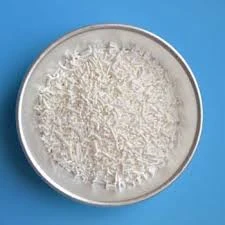
Exploring the Uses and Safety of E270 Food Additive in Modern Food Products
Understanding E270 A Common Food Additive
In the world of food production, additives play a critical role in enhancing flavor, extending shelf life, and improving the overall quality of food products. One such additive is E270, also known as lactic acid. This article will explore E270, its sources, uses, and safety, shedding light on its significance in the food industry.
What is E270?
E270 is the European food additive number assigned to lactic acid, a naturally occurring organic acid. It can be found in various fermented foods, such as yogurt, sauerkraut, and pickles. Lactic acid is produced by the fermentation of carbohydrates, primarily sugar, by lactic acid bacteria. This process not only contributes to the tangy flavor characteristic of many fermented products but also plays a role in food preservation.
Sources of Lactic Acid
Lactic acid can be derived from both natural and synthetic sources. In nature, it is famously produced during the fermentation of dairy products. Additionally, it can also be derived from vegetables and fruits through fermentation. In the food industry, however, lactic acid is often produced synthetically using carbohydrates sourced from corn or sugar beets. This method allows for a more controlled and efficient production process, making it widely available for various food applications.
Uses of E270 in Food Products
E270 has versatile applications in the food industry
. Its primary roles include1. Preservative Lactic acid is effective in inhibiting the growth of undesirable microorganisms, thus helping to prolong the shelf life of food products. It is particularly useful in products like salad dressings, sauces, and canned foods.
e270 food additive

2. Flavor Enhancer This food additive imparts a mild, tangy flavor to various products, making it a staple in many processed foods, such as snacks and dairy items.
3. pH Regulator Lactic acid helps in maintaining the desired acidity in food products. This is essential not only for flavor but also for texture and color stability, particularly in baked goods and confectionery items.
4. Fermentation Aid As a byproduct of fermentation, lactic acid plays a significant role in the production of certain foods, including cheeses and fermented beverages like kefir and kombucha.
Safety and Regulations
Lactic acid (E270) is considered safe for consumption and is approved for use in numerous countries, including those in the European Union, the United States, and beyond. Regulatory agencies, such as the US Food and Drug Administration (FDA) and the European Food Safety Authority (EFSA), have conducted extensive reviews of lactic acid and concluded that it poses no significant health risks.
Moreover, because lactic acid is naturally occurring in many foods, it is generally well tolerated by the human body. It is worth noting, however, that individuals with specific allergies or sensitivities may need to be cautious about their consumption of products containing E270.
Conclusion
E270, or lactic acid, is a valuable food additive that enhances flavor, extends shelf life, and maintains the quality of various food products. Its natural origins and wide-ranging applications make it a common ingredient in many households. With the backing of regulatory approvals and an established safety profile, consumers can enjoy food products containing E270 with confidence. As the food industry continues to evolve, lactic acid will undoubtedly remain an essential component in the production of safe and delicious food.
-
The Safety Challenges of Ammonium Nitrate FertilizerNewsJun.26,2025
-
The Critical Role of Mining ChemicalsNewsJun.26,2025
-
Shelf Life of Glacial Acetic Acid Food GradeNewsJun.26,2025
-
Enhancing PVC Longevity with 1,2,3-Benzotriazole InnovationsNewsJun.26,2025
-
China’s Dominance in Food Additive ProductionNewsJun.26,2025
-
Can Aluminum Hydroxide Replace More Toxic Alternatives?NewsJun.26,2025
-
PE and PP Plastics with Benzotriazole AdditivesNewsJun.12,2025
Hebei Tenger Chemical Technology Co., Ltd. focuses on the chemical industry and is committed to the export service of chemical raw materials.
-

view more DiethanolisopropanolamineIn the ever-growing field of chemical solutions, diethanolisopropanolamine (DEIPA) stands out as a versatile and important compound. Due to its unique chemical structure and properties, DEIPA is of interest to various industries including construction, personal care, and agriculture. -

view more TriisopropanolamineTriisopropanolamine (TIPA) alkanol amine substance, is a kind of alcohol amine compound with amino and alcohol hydroxyl, and because of its molecules contains both amino and hydroxyl. -

view more Tetramethyl Thiuram DisulfideTetramethyl thiuram disulfide, also known as TMTD, is a white to light-yellow powder with a distinct sulfur-like odor. It is soluble in organic solvents such as benzene, acetone, and ethyl acetate, making it highly versatile for use in different formulations. TMTD is known for its excellent vulcanization acceleration properties, which makes it a key ingredient in the production of rubber products. Additionally, it acts as an effective fungicide and bactericide, making it valuable in agricultural applications. Its high purity and stability ensure consistent performance, making it a preferred choice for manufacturers across various industries.











